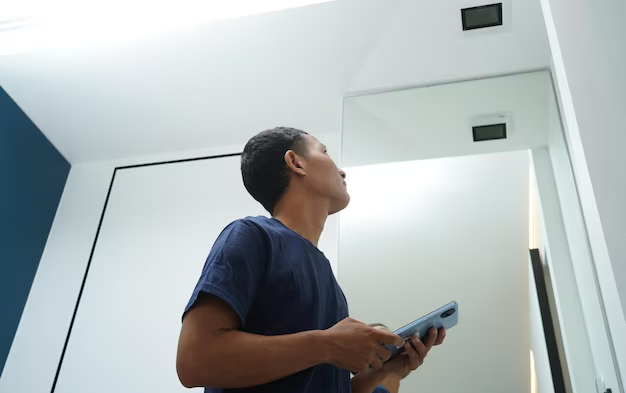How to Seamlessly Install Your New Refrigerator for Optimal Use
Bringing home a new refrigerator can be an exciting yet daunting experience. It's not just about making space in your kitchen but ensuring it fits perfectly, functions optimally, and is installed safely. Whether you're upgrading your old unit or setting up a new home, understanding how to properly install a refrigerator ensures longevity and efficiency. Dive into this guide that walks you through each essential step, enriched with valuable tips and practical advice.
🏡 Preparing for Installation
Measuring the Space
Accurate measurements are crucial. Begin by measuring the height, width, and depth of the area where the refrigerator will reside. Don't forget to consider doorways and any tight corners the appliance must pass through during delivery. A pro tip is to leave at least an inch of space on each side for proper ventilation and cable maneuvering.
Creating Access
Before you start, ensure you have a clear path from your door to the installation site. Having to move furniture or work around clutter can create unnecessary stress. Additionally, review your door swing clearance – make sure there's enough space for the doors to open fully.
Gathering Tools and Accessories
Essentials include:
- 🔧 Adjustable wrench
- 🪛 Screwdriver set
- 🧰 Tape measure
- 📏 Spirit level
- 🚿 Water supply kit (if your refrigerator has an ice maker)
🚚 Arriving with Your New Fridge
Inspecting the Unit
Upon delivery, inspect the refrigerator thoroughly for any damages. Check both the interior and exterior. Confirm all parts and accessories, such as shelves and trays, are included. It's easier to report issues immediately while the delivery team is still present.
Unpacking with Care
Remove all packaging material, including plastic, foam, and stickers, but keep instruction manuals and warranty documents secured. It's also a great opportunity to wipe down surfaces with a gentle cleaner before use.
Positioning the Refrigerator
Position the refrigerator by gently sliding it into the designated spot. Ensure that you have placed a protective mat beneath to avoid floor scratching. It's best to have someone assist you to maintain balance.
🔌 Making Connections
Electrical Setup
Ensure the outlet matches the refrigerator's plug type. It's preferred to use a dedicated outlet to prevent power overload. Make sure it is grounded properly to avoid any electrical hazards.
Water Supply Connection
If your refrigerator has an ice maker or a water dispenser, connect it to the water supply following the manufacturer's instructions. Use a proper water supply kit to avoid leaks, and remember to turn on the shut-off valve slowly to test the connection.
⚖️ Leveling the Refrigerator
Adjust the leveling screws until the refrigerator stands firm and flat on the floor. A properly leveled appliance reduces noise and ensures doors seal properly to maintain energy efficiency and cooling performance.
🧊 Initial Setup
Cooling Period
Once positioned and connected, allow the refrigerator to rest for a few hours before switching it on. This time lets the refrigerant settle. Afterward, set it to the recommended temperature settings (typically around 37°F for the fridge and 0°F for the freezer).
Loading the Refrigerator
Avoid overloading initially; begin by placing items one shelf at a time to allow even cooling. Be mindful of air circulation and avoid blocking vents with large items.
Personalizing Settings
Modern refrigerators often come with a plethora of settings. Take time to set up Wi-Fi connectivity, alarms, and other smart features if available.
🛠️ Maintenance Tips
Regular Cleaning
Regularly clean the coils at the back to enhance efficiency. Make a habit of wiping spills immediately to prevent odors and bacterial growth.
Filter Changes
If your refrigerator has a water filter, regularly check and replace it according to the manufacturer's schedule to ensure water quality.
Professional Service
Routine professional check-ups are advised to maintain your appliance's peak performance.
🌟 Key Takeaways for a Perfect Refrigerator Installation
- 🗂️ Proper Preparation: Measure spaces accurately and ensure clear passageways.
- 🔌 Electric and Water Connections: Confirm dedicated power and secure water connections for functionality.
- ⚖️ Leveling and Spacing: Properly level and set space around the appliance for optimal operation.
🎯 Quick Summary Checklist
- 📏 Measure everything (space, doorways, etc.).
- 🧰 Gather necessary tools in advance.
- 📦 Inspect and unpack upon delivery.
- ⚡ Ensure electrical safety — use a grounded, dedicated outlet.
- 🚿 Connect water supply — double-check for leaks.
- 📐 Leveling — use a spirit level for accuracy.
- 🌡 Cool your fridge first — before loading foods.
Embarking on the installation of a new refrigerator may feel complex, but with the right preparation and attention to detail, you can ensure a smooth setup process. In the end, a well-installed refrigerator pays back in enhanced efficiency, longer durability, and a streamlined kitchen experience. Enjoy your fresh start with your new appliance!
